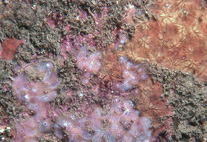Abstract
The paper presents an annotated catalogue of the millipedes (Diplopoda) of Cyprus, based on literature scrutiny and on hitherto unpublished material. A total of 21 species belonging to 14 genera, 9 families and 7 orders are recorded from the island. Three species are regarded as new to science, but are not formally described, and the status of another three is yet to be clarified. Pachyiulus cyprius Brölemann, 1896 and Strongylosoma (Tetrarthrosoma) cyprium Verhoeff, 1902 are established as junior subjective synonyms of Amblyiulus barroisi (Porat, 1893) and T. syriacum (Humbert & DeSaussure, 1869), respectively, both syn. nov. The present-day diversity of the Cypriotic millipede fauna is analysed in the light of past geological events. It is presumed that the fauna originated from the late Miocene, when Cyprus was formed as a result of uplift of the sea floor. During the Messinian salinity crisis, some 6–5.3 mya, land bridges existed between the island and the neighbouring Taurus Mts. (Turkey) and the region of Latakia (Syria), which are supposed to have served as migratory pathways for various millipede taxa.

